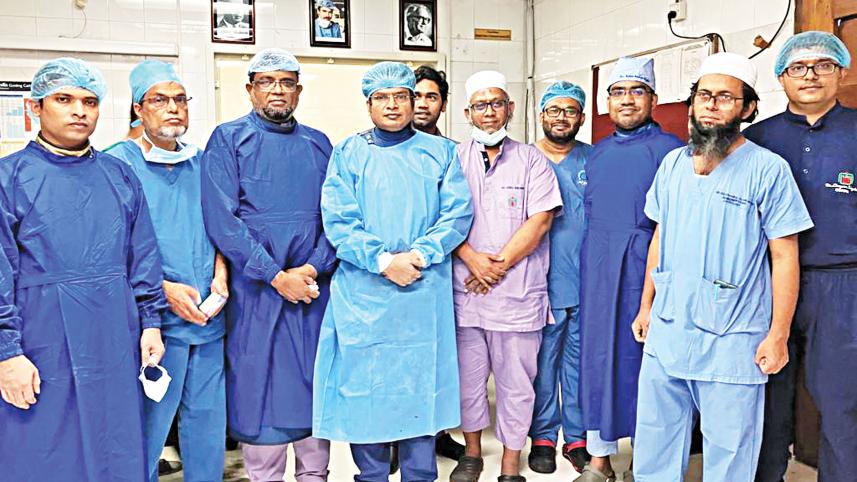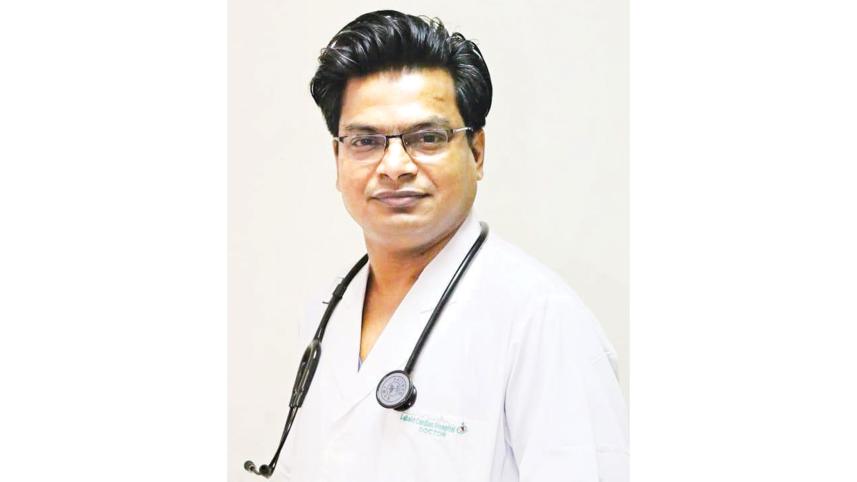An innovative approach to treating heart disease

Transcatheter Aortic Valve Implantation (TAVI) - a procedure that replace an aortic valve without chest incision or anaesthesia was successfully performed on a 80 year old patient at Bangabandhu Sheikh Mujib Medical University (BSMMU) recently by cardiologist Prof Dr S M Mustafa Zaman.
As we age, calcium accumulates in the valves. In some cases, the diameter of the valve opening may decrease to a square centimetre or less. As a result, the heart has to exert more force to push blood into the aorta. Various physical problems arise as a result of this. Usually, after the age of 60–65 years, this type of aortic valve problem can start.
TAVI involves inserting a catheter into a blood vessel in your upper leg or chest and passing it towards your aortic valve.
Previously, if there was a problem with the aortic valve or if this valve had to be replaced, the help of open-heart surgery had to be taken. In that case, a wound of about 7 to 8 inches was formed on the patient's chest. Even during the operation, the patient had to be kept under the supervision of the heart-lung machine.

The TAVI method does not require such an extensive cutting. The procedure is very similar to the angioplasty procedure. In this case, too, the catheter is inserted into the femoral artery through the groin. This catheter is advanced into the aorta, past the narrowed aortic valve, and into the left ventricle. It is then sent through the catheter. A balloon catheter is passed over this wire. A stent surrounds the balloon. And the new valve is sewn inside the stent. The balloon is moved to the old valve and inflated. As the balloon inflates, the narrowed mouth of the valve also expands.
This procedure also opens the stent surrounding the balloon. And the old valve is replaced with a new valve sewn together with a stent.
In response to a question about the benefits of TAVI, Dr Zaman said the patient does not develop large lesions in the chest. There is no more than two to three days stay in the hospital. No ventilation is required. As a result, the TAVI procedure is highly effective for aortic valve replacement in the elderly, who usually have multiple co-morbidities. Open heart surgery risky in such patients, and TAVI is much less risky in all these cases.
The operation at BSMMU was successful and the patient is discharged from the hospital. Dr Zaman said this is an important milestone in the public sector. He informed that the cost of TAVI procesure in Bangladesh is almost one fifth in comparison to some of the foreign countries. This can help Bangladeshi patients to a great extent. He urges support from the government to serve the deserving patients of the country.



 For all latest news, follow The Daily Star's Google News channel.
For all latest news, follow The Daily Star's Google News channel.
Comments